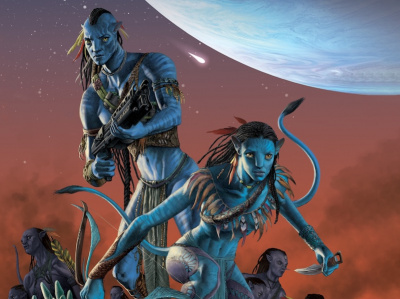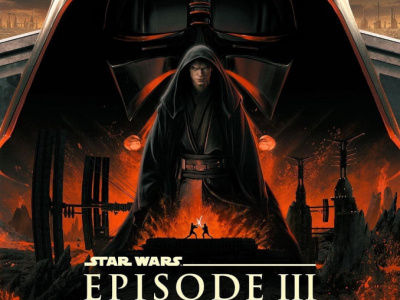
ICv2 sat down with Viz Vice President Publishing Leyla Aker; Director, Publishing Sales and Marketing Kevin Hamric; and Executive Vice President Publishing Alvin Lu at San Diego Comic-Con for an in-depth interview. In Part 2, we talk about digital strategy, the impact of digital on print and piracy, Viz’s top launches in the rest of 2012, things to watch in its ongoing series, and the broadening range of Japanese material Viz is publishing. In Part 1, we talked about changes in the manga market, Viz’s original kids graphic novel program, and replacing Shonen Jump.
What relationship, if any, are you seeing between the growth of digital availability and print sales? Do you think it’s a plus, a minus, no influence?
Aker: We haven’t really seen much of a correlation. The print sales are doing what they always do, and digital sales just seem to be over and above the print sales. I think it’s largely the nature of our product. With the mass market trade paperbacks somebody’s going to buy Sherrilyn Kenyon on an e-book and they’re not going to go out and buy the mass market paperback again. What we think is happening is that a good portion of our consumers will buy the actual physical product and keep it, but they’ll read it on their device to a certain extent.
We’ve been tracking that pretty closely and we just haven’t seen any really strong correlation there.
One thing we’ve been seeing in the American comics market is that there’s not a replacement happening, but there seems to be some recovery of lapsed consumers who had lost touch with their hobby of reading that kind of material and then find the print material later. Are you seeing anything like that on the manga side?
Aker: We are as a matter of fact. We’re seeing increases in some of our most popular properties. There are several reasons for that but one of the main reasons has to do with the release of the material in digital format—for example with Shonen Jump Alpha—in a much more expedited manner than we ever had before.
This time a year or two ago we were 20 volumes behind on Bleach. Now Bleach releases on Shonen Jump Alpha are pretty much completely caught up to the Japanese releases. We think that’s revitalized people’s interest because now they are being able to read the material just as it’s coming out.
Lu: Digital has also given us an opportunity with certain properties to drive some awareness to the backlist (obviously by re-releasing our catalog we’re doing so de facto). Zombie Powder, an early series by the creator of Bleach, is a good example. I think when we did the initial print run several years ago it got kind of lost. I don’t think there was enough awareness around it, and with the digital release we’re noticing that it’s performing relatively well. I think that has a lot to do with it being available digitally and people are discovering it for the first time.
Now that you have caught up with the release of Japanese material, especially on the key series, are you seeing any impact on the number of downloads of scanlated titles, or the traffic those sites are getting? Are you seeing any impact on pirated material?
Aker: We’re not tracking every single pirate site really closely, but anecdotally we have not seen much of a direct impact. The pirates are pretty much going to do what the pirates are going to do. The only time we see a direct impact is when one of those aggregators or channels is shut down; then we’ll see a diminishment. But it might be too soon. Alpha has started relatively recently so maybe after a certain amount of time people will replace their going straight to the pirated editions with coming to our site.
Are digital Viz titles only available on your own apps, with no e-books, no comiXology, no other platforms. Why is that your strategy?
Aker: We started making our titles available on Nook this year. Nook is the first dedicated e-reader device that we’re on. The sales for that have been really wonderful; it’s been really gratifying. So we are on iOS devices through the apps, through our Website, through Nook and now through the Android phones. We’re definitely going to continue to roll out to new devices in the future.
Lu: A slightly more elaborate answer to that question is that Viz was one of the first of the foreign language publishers to clear digital rights as far as manga goes. One of the positions we’re in is that our digital rights situations are somewhat tied to the digital rights situations in Japan. The decisions that we make in terms of what platforms we go on to also have repercussions in Japan; that’s something that we have to consider. That’s why we’re fairly deliberate in terms of reader platforms we move onto. It is something that we’re looking to expand now that there are more options available to us.
The other reason is technological. When we initially started looking at launching a digital program, for manga specifically, there weren’t a lot of very satisfying display solutions to the peculiarities of manga--right to left, or the way guided view works. ComiXology developed that beautiful Guided View that works perfectly for American comics, and two years ago that wasn’t quite the solution we were looking for for manga. Since then, with the speed at which technology develops, the display solutions are lot more diverse now, so that’s something that’s helping us to look more broadly at distribution platforms.
What product releases are you most excited about and that retailers should be paying attention to between now and the end of the year?
Aker: For this upcoming fall season there are three properties. One is the re-issue of Loveless, which is one of the properties that Topkyopop used to publish. They got up to about Volume 8 and it was one of the best-selling manga series back in the day, and then obviously Tokyopop went away and that property was in suspension. We are doing two things with it: Tokyopop had published up to Volume 8, so in order to serve both the existing readers of the series and the new readers, we are going to start publishing Volume 9 and simultaneously releasing two-in-one bind-ups of the earlier volumes. So there will be four two-in-one bind-ups and then Volume 9 and Volume 10, so we’re going to be publishing the series both from the beginning and the continuation concurrently.
The second big property is Neon Genesis Evangelion, which a lot of people are familiar with. One of the things that is very, very cool is that a couple of months ago Kadokawa Publishing, which is the original Japanese publisher, approached us with a proposal to do worldwide global simultaneous release of the newest volume, Volume 13. So we’ll be doing that in November. It’s basically what amounts to an international laydown and that will be concurrent with us re-releasing Volumes 1 through 12 in deluxe three-in-one editions. And there are going to be other things happening with that property in the fall, not necessarily with us.
The third thing that we have is a deluxe re-publication of Nausicaa by Miyazaki. We’re doing a very beautiful boxed set where we’ve collected the seven original volumes into two hard covers. It’s really gorgeously designed, and we think a lot of people will be looking for that.
There’s been some churn in your bestselling ongoing series. What’s going on with trend lines with some of your ongoing series?
Aker: Our heavy hitters are pretty constant. It’s Naruto and Bleach. Deathnote, even years after its publication was over is still a very strong for us. It’s classic. Rosario and Vampire, obviously, and Blue Exorcist, which is our new Shonen Jump series that is probably one of the strongest performing debuts we’ve had in a couple of years. There’s a lot of good things going on about that property, and we’re probably going to see that grow a lot over the next year.
One interesting little trend that we think we’re seeing and we’re doing some analyses to work it out, is an increase in the sales level of shojo properties. The girls properties are not going to get to Naruto levels, but for a normal series, we’re seeing them achieve parity with the boys’ properties or possibly even outselling them
What’s an example?
Our bestsellers we’ve had so far, Vampire Knight and Black Bird, but also some of the new series debuts that we’ve had like Ai Ore! There’s a new one coming out called Jiu Jiu, which is doing phenomenally well, and Dawn of the Arcana. These are all performing beyond our expectations.
There’s obviously been a trend in the last year or so of Viz publishing more Japanese material that’s not from Shogakukan and Shueisha. Some of that may be because there aren’t any other options here in the States. Can you talk a little about that trend and where you see that going?
Aker: A lot of it is purely a result of Tokyopop not being on the scene anymore. When Tokyopop was a major force in licensing and Go! Comi, Bandai, and the smaller publishers were around, we really didn’t go to a lot of publishers because it was more of an effort to secure those licenses in competition with the other publishers, and we didn’t really need to. Our parent companies’ catalogs were so deep there wasn’t a huge impetus to go out to try to find other stuff. But now the publishing landscape here has changed so much, where there’s essentially only a handful of players left, the field is more open so when we are looking to acquire material, the editors know that they should be looking everywhere. It’s kind of an organic process of just going further afield.
Click here for Part 1.
Click here for Part 1.







